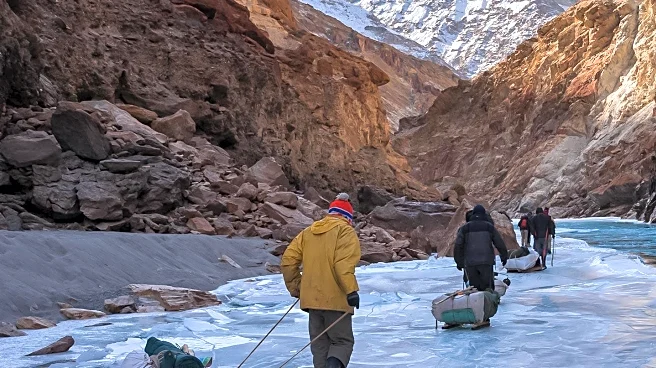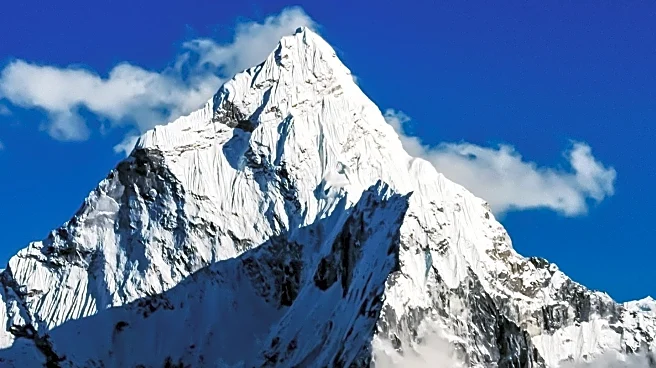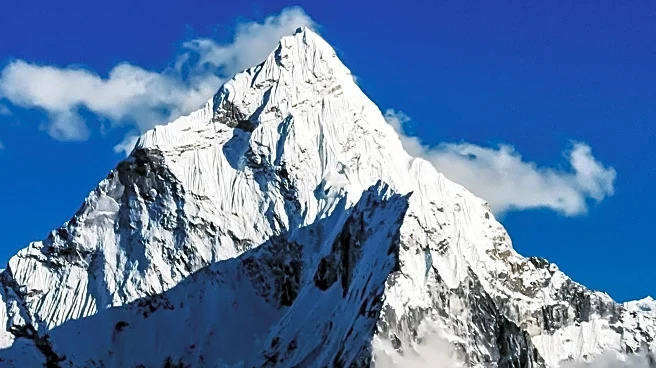What's Happening?
Trekkers on Mount Everest have encountered severe weather conditions due to an unseasonable snowstorm, leading to a significant rescue operation. The storm, which struck during China's 'Golden Week' holiday, trapped hundreds of people on the Tibetan side of the mountain. Approximately 350 individuals have been safely guided down, while around 200 remain stranded. The snowstorm, described as 'extreme' by trekkers, has created dangerous conditions, with snow accumulating rapidly and causing fears of being buried alive. The rescue efforts are ongoing, with local authorities and rescuers working to ensure the safety of those still on the mountain.
Why It's Important?
The situation highlights the unpredictability of weather conditions in high-altitude regions and the risks associated with trekking in such environments. The incident has implications for the tourism industry in the region, particularly during peak seasons like 'Golden Week.' The rescue operation underscores the need for robust emergency response mechanisms in popular trekking destinations. Additionally, the event may prompt a reevaluation of safety protocols and preparedness measures for tourists and local authorities alike.
What's Next?
Rescue operations are expected to continue as authorities work to bring the remaining stranded trekkers to safety. The incident may lead to temporary restrictions on trekking activities in the area until conditions stabilize. There could also be increased scrutiny on the management of tourist activities in high-risk areas, potentially leading to new regulations or guidelines to enhance safety.










